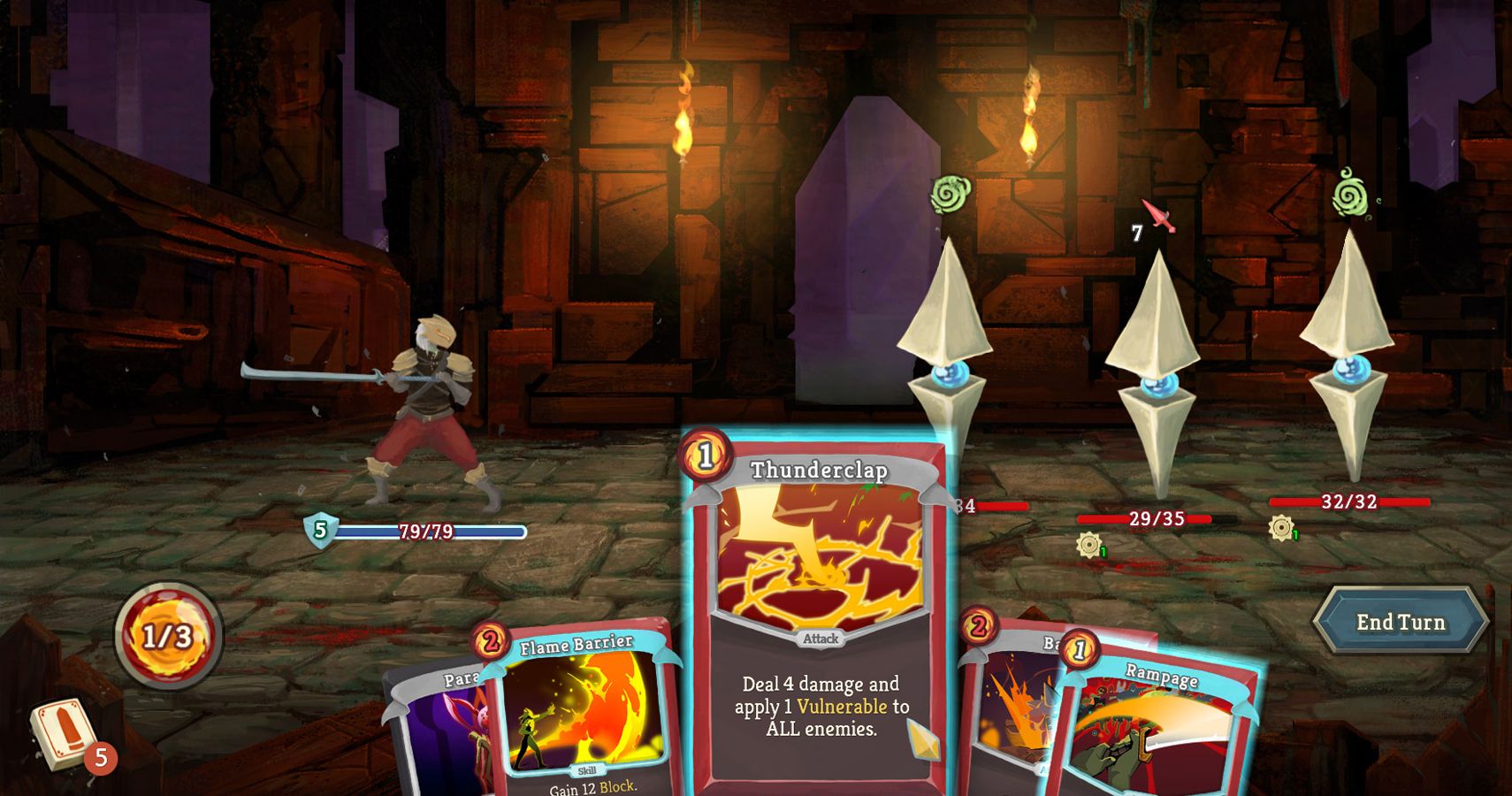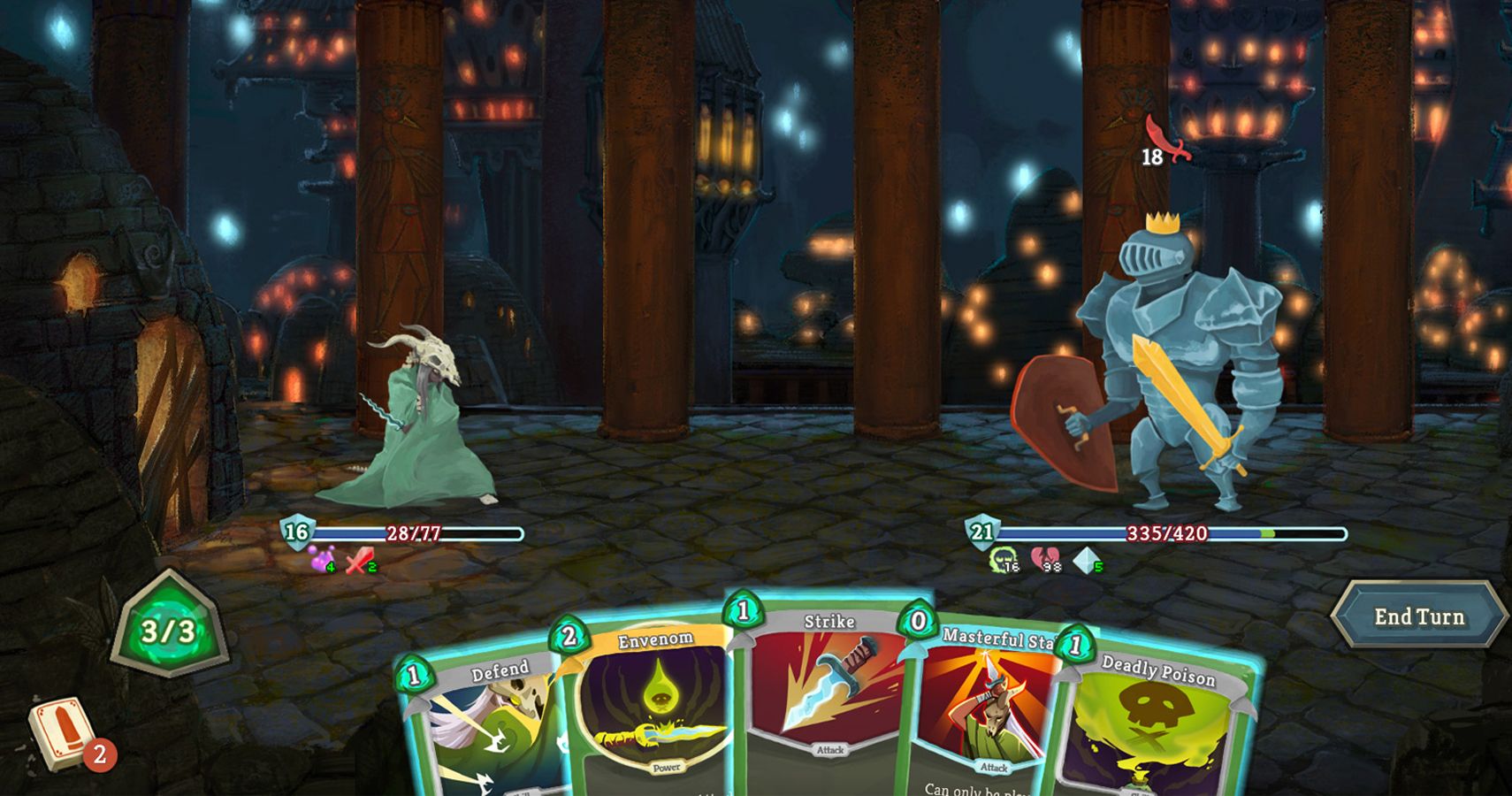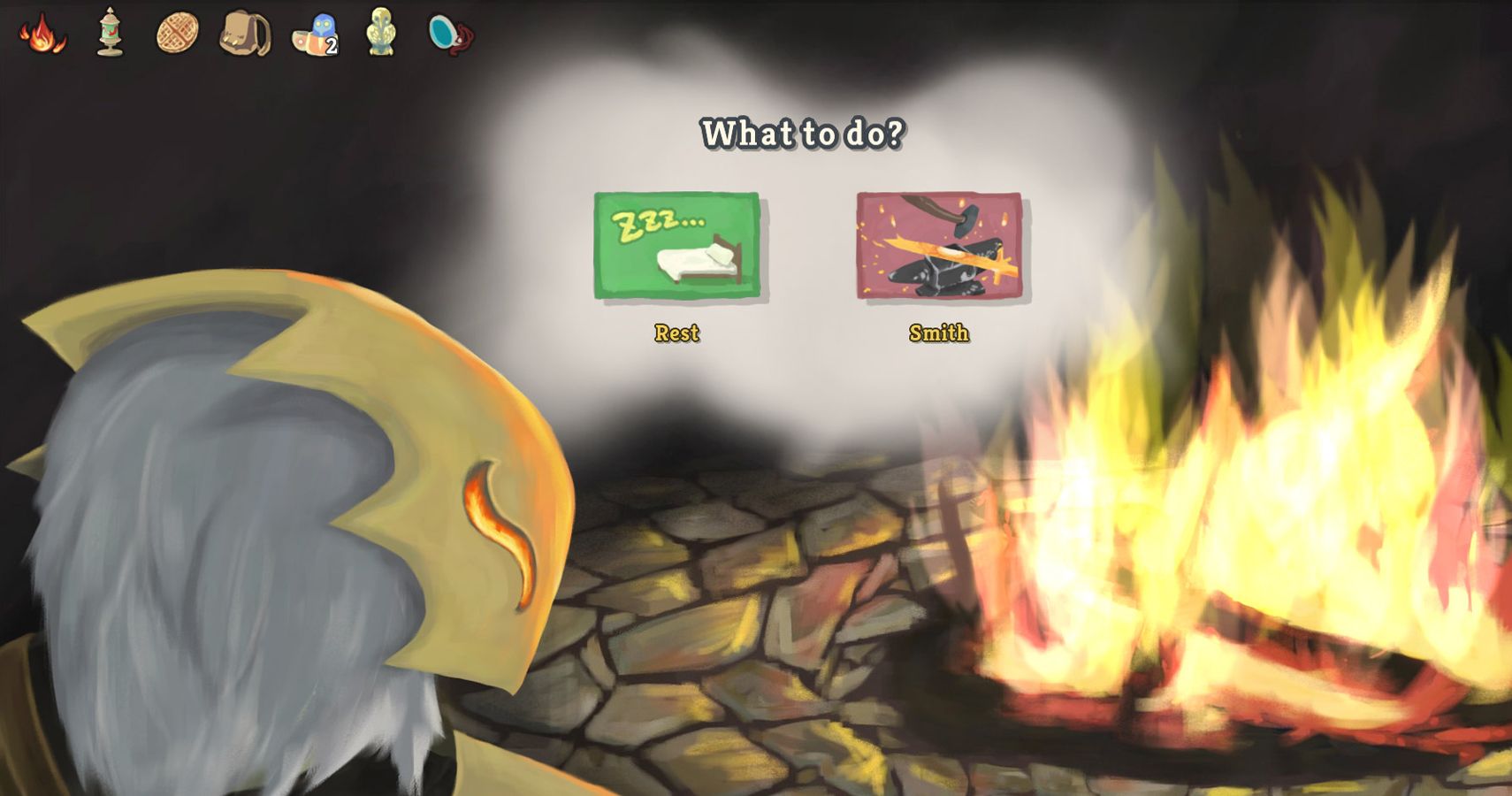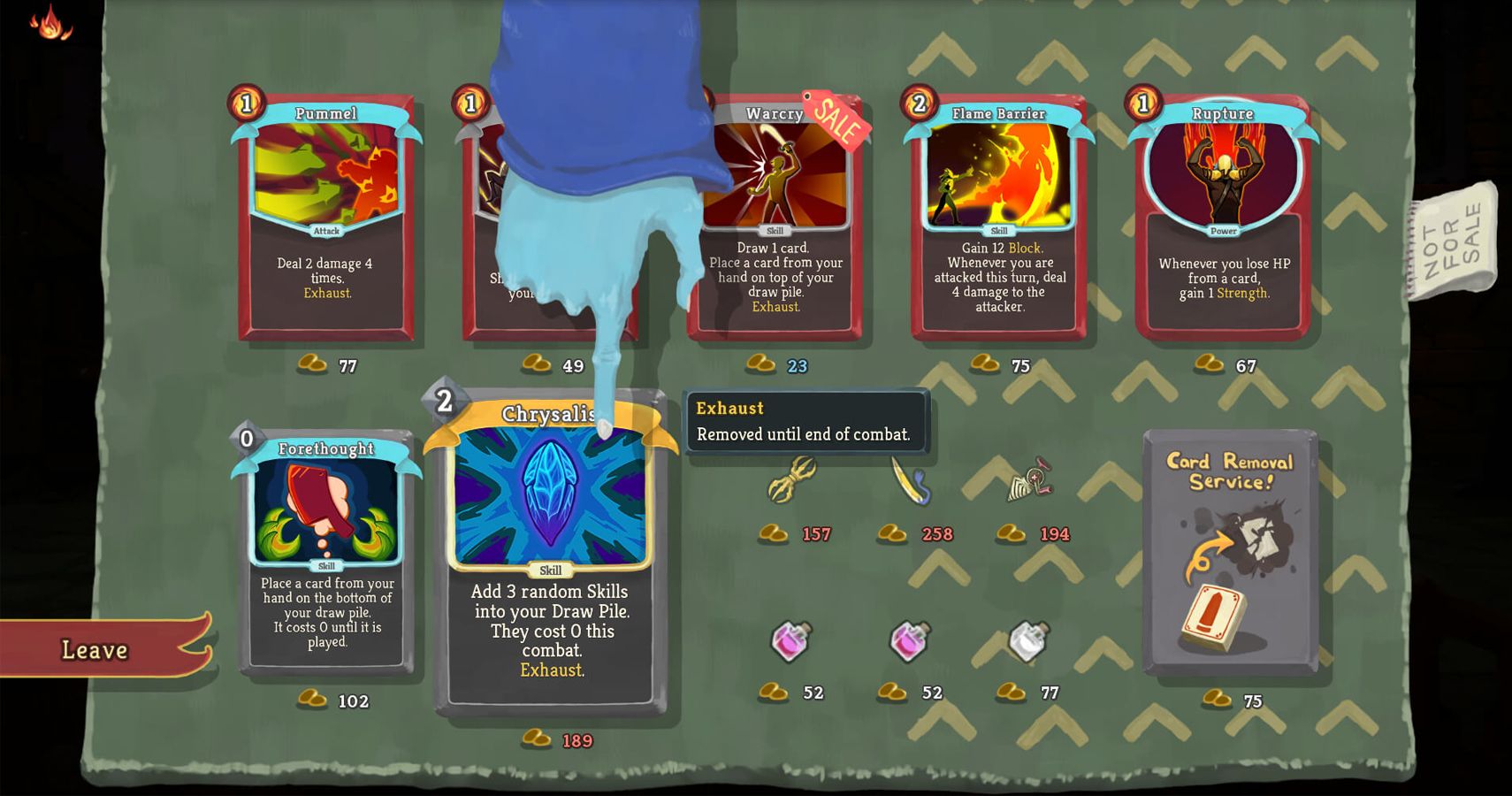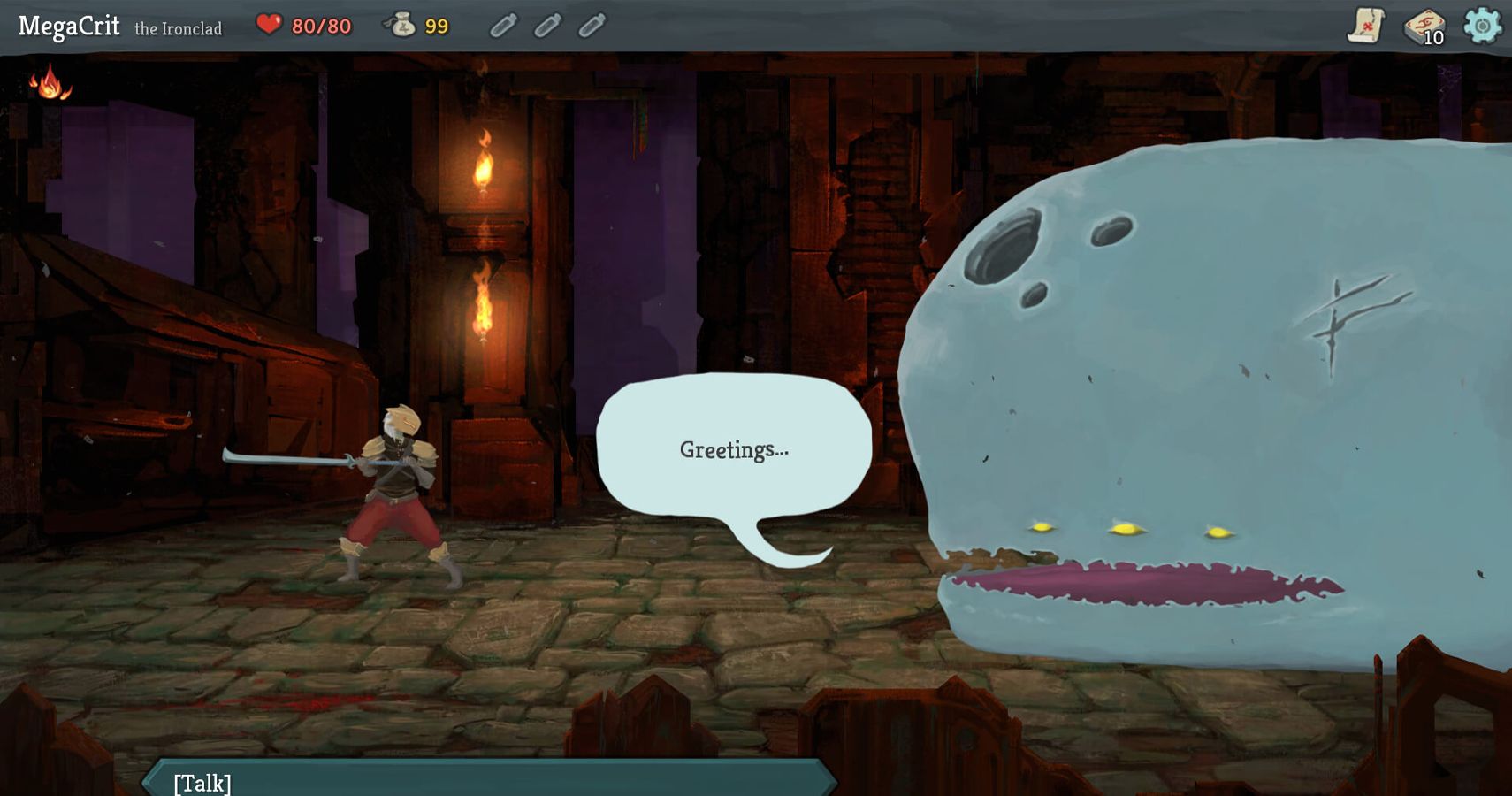Slay the Spire from Mega Crit Games is available now on Steam after spending over a year in Early Access. The challenging roguelike digital trading card game received rave reviews while in Early Access with an “Overwhelmingly Positive” player rating, and having played the fully released game, it is easy to see why. Slay the Spire successfully provides players with a captivating deckbuilding adventure that is just as strategically intensive as it is it is fun to play.
Slay the Spire tasks players with climbing “The Spire” over the course of three acts, in which they encounter villains, challenges, and treasures as one of three characters: Ironclad, the only available character for newcomers to the game and who is essentially a jack-of-all-trades, well-rounded character; Silent, a rogue-like huntress who prefers defense, daggers, and poisons; and Defect, a self-aware robot who uses orbs to invoke additional passive effects (similar to Zenyatta of Overwatch).
If you have played other digital trading card games, such as Hearthstone or Magic: The Gathering, you will likely feel right at home with Slay the Spire’s mechanics. That is not to say the game is at all easy, though. Honestly, it’s quite the opposite. Strategy - along with some luck - are required from the very start of each act. Players choose their starting node from a selection of a handful of procedurally generated paths, which lead them up The Spire room-by-room in a winding fashion as they make their way to the final boss at the Heart of the Spire. Relics, potions, and additional cards can be collected and purchased along the way, but knowing when to use (or not use) the items become pivotal as players make their journey along the map.
Keeping tabs on the cards in your deck is equally as important, as a balanced deck is key for survival. Players’ health only fully regenerates following each act. Certain cards - as well as campfire nodes on the map - regenerate health as players travel through the acts, but the amount is minimal. As such, it is important to maintain a solid balance of offensive and defensive cards within your deck, and knowing when to play them.
RELATED: How Can Valve Rescue Artifact? Bring Gordon Freeman Out Of Retirement
Slay the Spire makes it fun to strategize in that regard. During combat encounters, the enemy's intent for their upcoming turn is displayed at the beginning of the player’s turn. For instance, if an enemy is planning to attack, a sword icon appears over their head, allowing players to prepare by playing “Block” or “Debuff” cards which will negate or weaken the attack. Trust us when we say you’ll need to use your Block cards (probably more than attack cards). It’s best to think of combat encounters as marathons, rather than sprints, since your health will need to last you through the entire act. Just be patient and play the numbers displayed on the player interface (yes, math is involved and a huge part of your strategy). Your long-term mentality will be handsomely rewarded with gold, cards, potions, and special relics, which you will need for the elite villains and act bosses. The bosses in particular (and the amount of health they possess) are not to be taken lightly.
Of course, the difficulty of Slay the Spire is there by design. In fact, in an interview with PC Gamer, lead designer, Anthony Giovannetti, stated, “The win percentage for an average player fluctuates based on character and the current state of the balance, but it's not that high… but that's intentional. We want it to be pretty skill-based. If you jump in on your first time and you're like, 'This is the easiest game ever,' that wouldn't be very satisfying. We want you to feel like you learn and get better and make progress.”
In terms of progression, as you play, you can see how you stack up against other players’ scores and where you stand in the rankings. These rankings are captured for the normal game mode, as well the game’s other modes including Ascension, which is essentially a hardcore mode, and the daily challenge, which switches up modifiers that ultimately affect gameplay and strategy.
The action in Slay the Spire is fast and fluid - a normal full three-act trek takes roughly 30 minutes to an hour to complete - with beautiful artwork and alluring music that draws you into The Spire’s world. Dialogue from the charming characters is kept at a minimum, but contains a solid amount of humor. While mods can be applied to the game through the Steam Workshop as we wait for additional content (which is eventually coming), Slay the Spire encompasses pretty much everything you would expect in a digital trading card game, with its roguelike nature keeping each playthrough relatively fresh and entertaining.
As someone who doesn’t necessarily gravitate towards digital trading card games or titles with RPG-style turn-based combat dynamics, there was admitted hesitation about playing the game for this review. However, the team at Mega Crit Games knocked it out of the park by making a digital trading card game that is fun and approachable enough for both veterans and newcomers to the genre, with a high level of replayability and an ability to hook you from the start. Besides a desire for more content, such as additional playable characters, the only other (temporary) negative is the fact that Slay the Spire is not yet available on the Nintendo Switch, which is a move planned for later this year. The game will be perfect for playing on the mobile console, which will likely continue to monopolize even more of your time while on-the-go.
A copy of Slay the Spire was purchased by The Gamer for this review. The game is available now for PC and will be released on the Nintendo Switch later this year.
4.5 out of 5 stars

